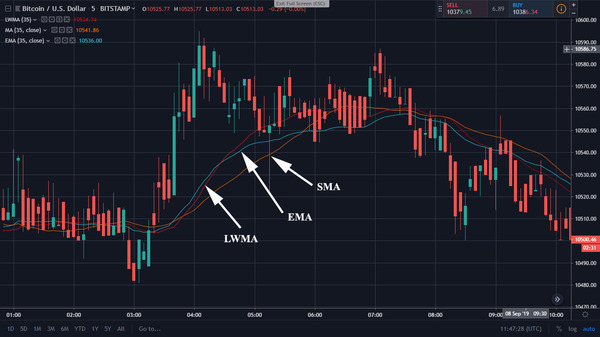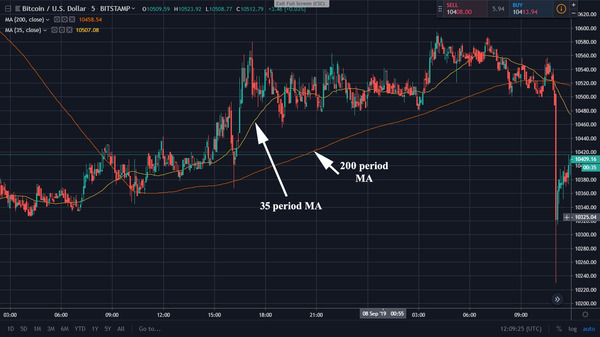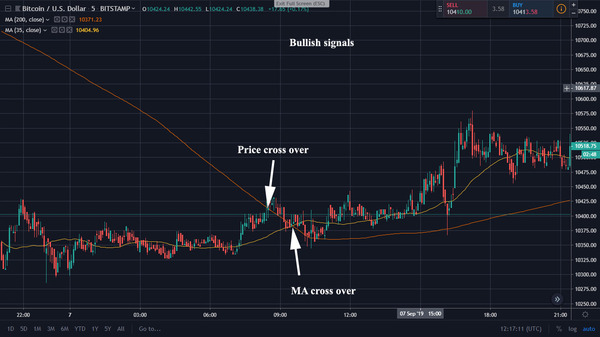
- At first glance, momentum-based trading looks like the sort of sin in which no trader should ever indulge.
- Momentum investing is about buying winners and selling losers. It lends itself well to bitcoin trading.
- The predictive power of this approach is statistically proven.
- Determining the direction and strength of price momentum is a relatively simple technical exercise.
- That said, the strategy carries quite a few risks. It is not easy to get its finer points right.
Momentum Trading Goes Squarely Against Traditional Investing Wisdom
Buying low and selling high is one of the core tenets of profitable investing. “The trend is your friend” is yet another Wall Street axiom, however. It is this latter bit of wisdom that momentum investing follows.
Instead of buying a loser and waiting for it to turn into a winner, momentum investors buy winners that are still on their way up, dropping losers. The source of logic in this setup is that price swings always entail momentum. This momentum carries them onward for a while before they run out of steam.
From the perspective of financial science, the phenomenon of momentum should not exist. Yet it does exist as an anomaly that science cannot fully explain. That said, we do understand a few of the reasons that allow it to exist:
- Investor herding is one of the cornerstones of momentum. People instinctively like winners and they want to jump on the winner’s bandwagon.
- Even in this day and age, market participants tend to react slowly to information. Savvy traders pounce quickly, then jump the ship before the “herd” as well, when the going gets sour.
Momentum May Be an Anomaly, But It Is Predictive
We can look at simpler momentum models like the one considering an asset in isolation, or more intricate models such as relative momentum, which draws comparisons between assets. The conclusion remains that high momentum trumps low momentum performance-wise every time. This has been proven statistically.
That makes bitcoin the top choice for crypto momentum traders for several reasons.
How Do You Use Momentum for Bitcoin Trading?
To momentum-trade your way to profits on bitcoin, you need to understand the details and finer points of the approach.
- Picking the right type of asset is of the essence. Bitcoin fits the bill because it is highly liquid. It is volatile and it exhibits the strongest price-swing momentum in the digital asset industry. It also tends to react to the news with more vigor than its peers.
- Risk control is mostly about staying on top of the situation at all times. Time your entries and exits well, and keep your eyes on signals/trend changes while your position is open. Try to avoid keeping your positions open overnight.
- Getting your entry right is the bare minimum if you are momentum trading. Anticipating and exploiting news-shocks is your best bet in this regard. Steer clear of aging trends.
- With position management, you are walking a tightrope. You need to keep your position open long enough to beat the spread, but the longer you keep it open, the riskier it gets. Always keep an eye out for swings that expose stops.
- To get your exit right, you need to watch for various technical factors such as crossovers, trendlines, and previous highs/lows.
Measuring Momentum with Moving Averages
Using Moving Averages (MAs) to determine trend direction and strength is one way to use these mathematical artifices. MAs will also clue you in on upcoming trend reversals.
The three most popular MAs are:
- The Simple Moving Average (SMA). This indicator simply adds up the prices over a predetermined number of periods and then divides the result by the number of periods. This arithmetic average grants equal importance to older and never prices.
- The Linear Weighted Moving Average (LWMA) grants greater importance to recent prices. It takes the price of a given period and multiplies it by the position of the data point. It then adds them all up over all considered periods and divides the result by the number of periods.
- The Exponential Moving Average (EMA) uses a more intricate method to grant recent price points even greater weight.

To draw conclusions on trend direction and strength based on MAs, look for:
- The MA slopes. Steeper slopes mean stronger bullish/bearish trends. Upward sloping MAs mean bullish trends and downward sloping MAs point to bearish trends.
- When a short term MA is above a longer-term one, the trend is bullish. When it is below it, the trend is bearish.

To spot trend reversals, look for:
- The price crossing over an MA. If it crosses above it, there is a bullish reversal in the works. Note that only long-term MAs yield relevant signals in this regard.
- A short-term MA crossing over a long term MA. This works similarly to price crossovers.

The Bottom Line
Momentum-based bitcoin trading may sound simple and attractive, but it carries scores of caveats. Beginners will most likely not get it right.
- It can be expensive fees-wise.
- It is definitely time-intensive.
- It works best in bull markets and it is quick to penalize emotional trading.
Subscribe to the Bitcoin Market Journal newsletter to plug yourself into the loop of digital asset investment opportunities.

